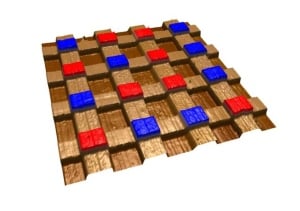This article is more than 1 year old
Boffins read memory bits with light
Non-destructive reads for FRAM
Researchers from the US and Singapore have demonstrated a form of ferroelectric RAM that can be read with light instead of electricity – along the way overcoming a problem that has kept the technology locked away in a relatively small niche.
FRAM is attractive as a memory technology because, unlike dynamic RAM (DRAM), it only needs to have a voltage applied to change its state, but it operates faster than technologies like flash memory. It's still slower than DRAM, however, and worse: reading the state of FRAM destroys it, meaning it has to be re-written after reading, leading to long-term reliability problems.
What UC Berkeley materials scientist Ramamoorthy Ramesh and Nanyang Technological University in Singapore oxide materials specialist Junling Wang have demonstrated is that FRAMs based on bismuth ferrite can be read with light instead of electricity.
While bismuth ferrite can be set and read electrically, it also has a useful photo-electric property. When illuminated, it produces a voltage, and the voltage varies depending on the material's polarisation state. Conversely, the polarisation state reflects its electrical condition.
That means FRAM bits set to 1 or 0 will produce a different voltage under illumination – and illumination doesn't destroy the memory state.

Bright idea: illuminating the bismuth ferrite
array reads FRAM state without destroying it
Image: Wang & Ramesh
The Ramesh and Wang prototype is based on films of bismuth ferrite grown on a metal oxide, and etched into strips. Four metal strips were laid down at right angles to the bismuth ferrite, creating 16 intersections acting as memory cells. The electrodes are used to polarise each cell, and illuminating the array allowed the bit states to be read.
The researchers say they were able to execute hundreds of millions of read-write cycles without degradation.
At 10 microns, the structure is way too large to be practical, so future work will look at the twin issues of scaling down the size while working on optical technologies that can illuminate individual bits rather than the whole array. ®
